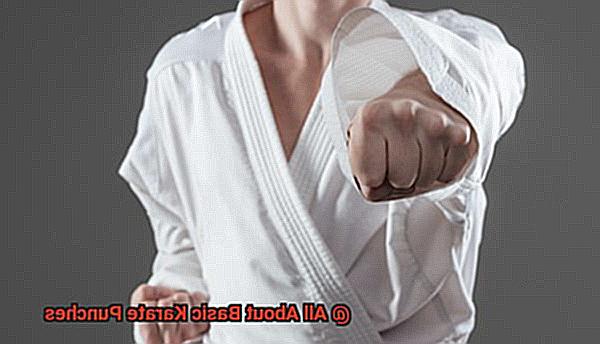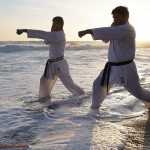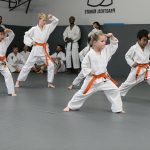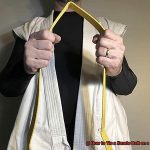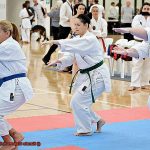Do you want to take your martial arts skills to the next level?
If so, mastering basic karate punches is an excellent place to start. While they may seem like flashy moves only seen in movies, these punches can provide effective physical and mental exercises.
There are four fundamental karate punches: jab, cross, hook, and uppercut. Each punch targets specific areas and requires concentration on technique and force.
Moreover, these punches serve as a foundation for more advanced techniques such as kicks, blocks, and elbows in both defensive and offensive positions. However, mastering basic karate punches goes beyond just physical strength.
It also involves mental strength and discipline. Punches require concentration, control, and patience – all of which contribute to building confidence, self-awareness, and self-defense skills.
So, get ready to dive into the world of karate punches and elevate your training.
History of Karate Punches
Karate punches have been an essential component of this martial art form since ancient times.
Originating from Okinawa, Japan, karate was primarily used for self-defense. The history of karate punches can be traced back to the 17th century when Sokon Matsumura developed the first known style of karate called Shuri-te.
This style had a strong focus on hand techniques, including punches that were straight and quick with a snapping motion at the end. Over time, different styles of karate emerged, each with its unique punch techniques.
Chojun Miyagi, an important figure in the history of karate punches, developed the Goju-ryu style in the early 20th century. This style emphasizes circular movements and strong strikes, including punches that are delivered with the entire body, not just the arm.
Miyagi believed in using hip rotation to generate power, making Goju-ryu punches highly effective. Modern forms of karate like Kyokushin Karate have also developed their own punch techniques to suit their full-contact fighting style.
The “reverse punch” is one such technique that involves rotating the punching arm at the last moment to generate maximum force. While different styles of karate employ different punch techniques, they all agree on one fundamental principle – proper technique is crucial for executing these punches successfully.
Maintaining proper stance and posture and generating power from the hips and legs are crucial aspects of executing powerful karate punches. It is also essential to keep the wrists straight and not bend them during the punch as this can result in injury.
In conclusion, the history of karate punches is rich and varied, with different styles emphasizing different techniques and philosophies. However, they all share one common goal – to develop strong, effective punches that can be used for self-defense or competition.
Proper technique is key to mastering these punches fully, and it takes practice and dedication to achieve this mastery.
Types of Basic Karate Punches
Karate is a martial art that has captivated people for centuries.
With its roots in ancient Okinawa, Japan, karate is primarily known for its self-defense techniques. One of the essential aspects of this martial art form is karate punches, and there are three basic types that every practitioner should know.
The first type of basic karate punch is the straight punch. This punch is the most common and straightforward technique used in karate.
It involves punching with the front hand in a straight line towards the opponent’s face or chest area. The arm should be fully extended while maintaining a tight fist, and the body should rotate to add power to the punch.
The straight punch is an excellent way to attack an opponent from a distance and is a fundamental technique in karate. The second type of basic karate punch is the uppercut punch.
This punch packs a powerful upward strike towards your opponent’s chin or stomach area. Executed by bending your elbow and punching upward from underneath while rotating your body, you can add more power to your strike.
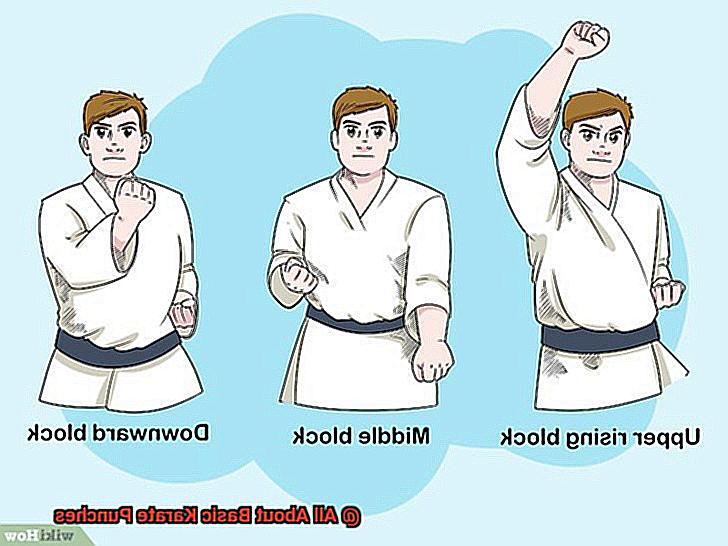
The uppercut punch is perfect for close-range attacks or countering your opponent’s attack. The last type of basic karate punch is the hook punch.
This circular motion punch aims at your opponent’s face or temple area. You execute it by bending your elbow and rotating your body while keeping your arm close to your body until it reaches its target.
The hook punch is ideal for attacking an opponent’s side or head area. It’s essential to understand that each punch should be executed with proper form and technique to avoid injury and ensure maximum effectiveness.
Practicing these basic punches repeatedly can help improve speed, power, and accuracy in karate techniques.
So, mastering karate punches takes practice and dedication.
Jab
It’s a straight punch thrown from the lead hand that can be used to set up other strikes or keep an opponent at bay.
To throw a perfect jab, start by standing in your fighting stance with your lead foot forward. Your lead hand should be near your chin with your elbow slightly bent, while your other hand should be up to protect your face.
As you throw the jab, extend your arm fully and rotate your fist so that the palm faces down at the end of the punch. Don’t forget to bring your shoulder forward slightly to add power to the punch.
Depending on the style of karate being practiced, you can throw a jab with either a closed fist or an open hand. When throwing a jab, it’s crucial to use your entire body to generate power.
Keep yourself balanced and utilize your legs and hips to give the strike some extra oomph. Always keep your other hand up to protect yourself while throwing the jab.
The jab is not just an offensive technique; it can also be used defensively. By keeping your opponent at bay with a series of jabs, it becomes challenging for them to close in and land a strike.
Furthermore, jabs can help gauge distance and timing, making it easier to set up other punches or kicks. To make your jab even more effective, practice proper form and technique repeatedly.
Cross
Then it’s time to perfect the cross punch.
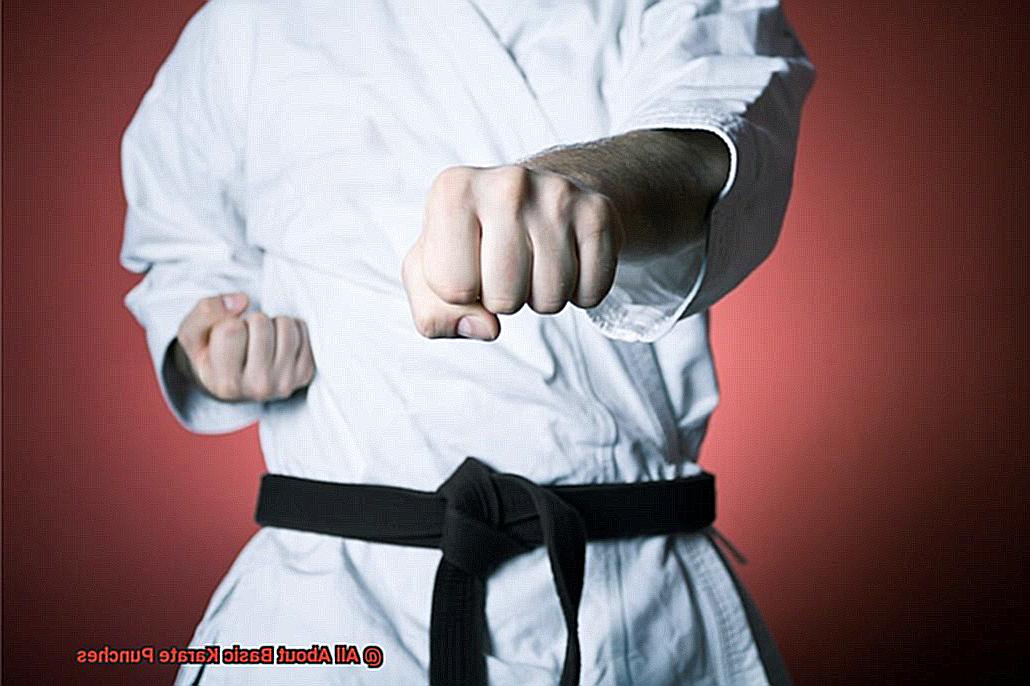
This powerful straight punch from the rear hand is one of the most effective and versatile techniques in karate. Executing a cross punch requires precision and technique.
Begin in a fighting stance with your rear hand back. As you punch forward, twist your hips and shoulders towards your opponent, keeping your elbow down and close to your body.
Protect yourself by positioning your other hand up. Finish with your arm fully extended and your fist facing downwards.
But don’t mistake the cross punch for just raw strength. Timing and accuracy are equally important.
Anticipating your opponent’s movements and striking at the right moment is a learned skill that takes practice and repetition. The cross punch can be used in a variety of situations, whether you’re advancing towards an opponent or countering their attack.
Its versatility makes it ideal for both offense and defense. Becoming a master of the cross punch takes dedication and effort.
You need to coordinate different parts of your body while generating power and accuracy. But with consistent practice, anyone can learn how to execute this powerful technique with confidence and precision.
With this technique in your arsenal, you’ll be able to take on any opponent with ease.
Hook
Well, it all begins with a strong hook.
The hook is the opening sentence or paragraph that sets the tone for your article or content piece. It’s the key to capturing your audience’s attention and encouraging them to read on.
And if you want to create an article on “All About Basic Karate Punches” that stands out, then crafting a killer hook is essential. One way to create an effective hook is by starting with a question or statement that challenges the reader’s knowledge or beliefs.
For example: “Think you know everything about basic karate punches? Think again.”
This type of hook creates an air of mystery and excitement that leaves the reader wanting more. Another approach is to use a story or anecdote that relates to the topic, establishing a personal connection with your audience.
For instance: “As a beginner in karate, I was always intimidated by throwing punches. But with practice and guidance from my sensei, I learned that basic karate punches are not only easy to execute but also incredibly powerful.”
This type of hook paints a relatable picture for readers and makes them curious about what other tips and tricks they could learn from you. Ultimately, the key to a successful hook is making it relevant, interesting, and informative.
By capturing readers’ attention right from the start, you establish yourself as an expert on “All About Basic Karate Punches” and keep them engaged throughout the entire article.
E03goHzoE7U” >
Uppercut
Karate is all about crafting the perfect punch, and the uppercut is a move that demands both power and skill to execute effectively.
This punch is delivered from close range and aims to strike the opponent’s chin or torso upwards. To deliver a successful uppercut, a karate practitioner must have exceptional core strength and footwork.
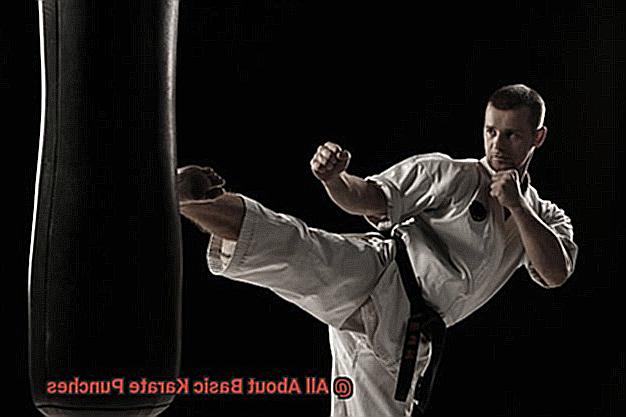
The uppercut offers a significant advantage in combat by catching opponents off-guard with a strike from below, which can lead to a knockout. However, this move is not without risks, as it can leave fighters open to counter-attacks if not executed correctly.
To master the uppercut, karate practitioners must focus on developing their core strength and improving their footwork. They must also learn how to maintain a proper stance and keep their body weight centered to generate maximum power behind each strike.
Patience is key when it comes to executing an uppercut in combat. Karate fighters must remain focused and attentive to their opponent’s movements, looking for openings that they can exploit with an uppercut.
When the opportunity arises, they must deliver the punch with precision and power, striking with the first two fingers’ knuckles. In conclusion, mastering the uppercut in karate requires dedication, patience, and a lot of hard work.
While it may be a risky move in combat, its potential to catch opponents off-guard and cause a knockout makes it a valuable tool in any fighter’s arsenal.
Also Read: All About Karate Strikes to Stop the Fight? – Karate Maine Blog
Conclusion
In conclusion, mastering basic karate punches is a must for anyone who wants to take their martial arts skills to the next level.
The four fundamental karate punches – jab, cross, hook, and uppercut – offer not only physical but also mental exercises that serve as a foundation for more advanced techniques. To master these punches, you need more than just physical strength; you require mental strength and discipline.
Punches demand concentration, control, and patience – all of which contribute to building confidence, self-awareness, and self-defense skills. The history of karate punches is fascinating and diverse with different styles emphasizing various techniques and philosophies.
However, all agree on one fundamental principle – proper technique is crucial for executing these punches successfully. Executing each type of basic karate punch with proper form and technique is essential to avoid injury while ensuring maximum effectiveness.
In summary, by focusing on developing strong basic karate punches with proper technique while maintaining mental focus and discipline will elevate your training to new heights.

